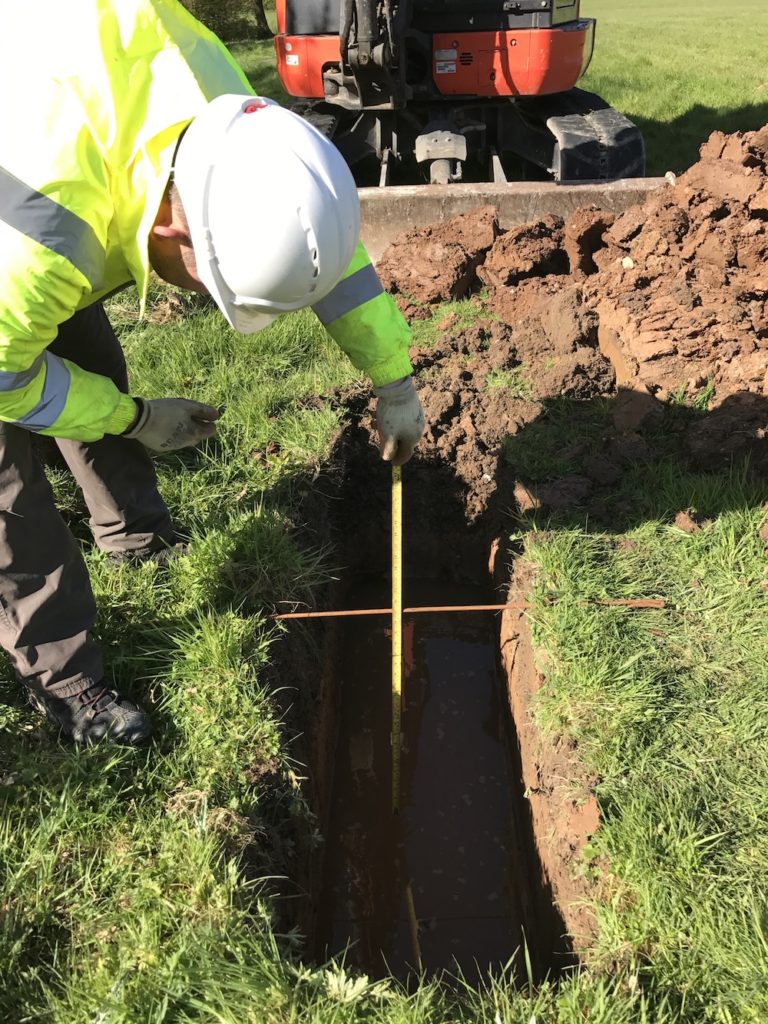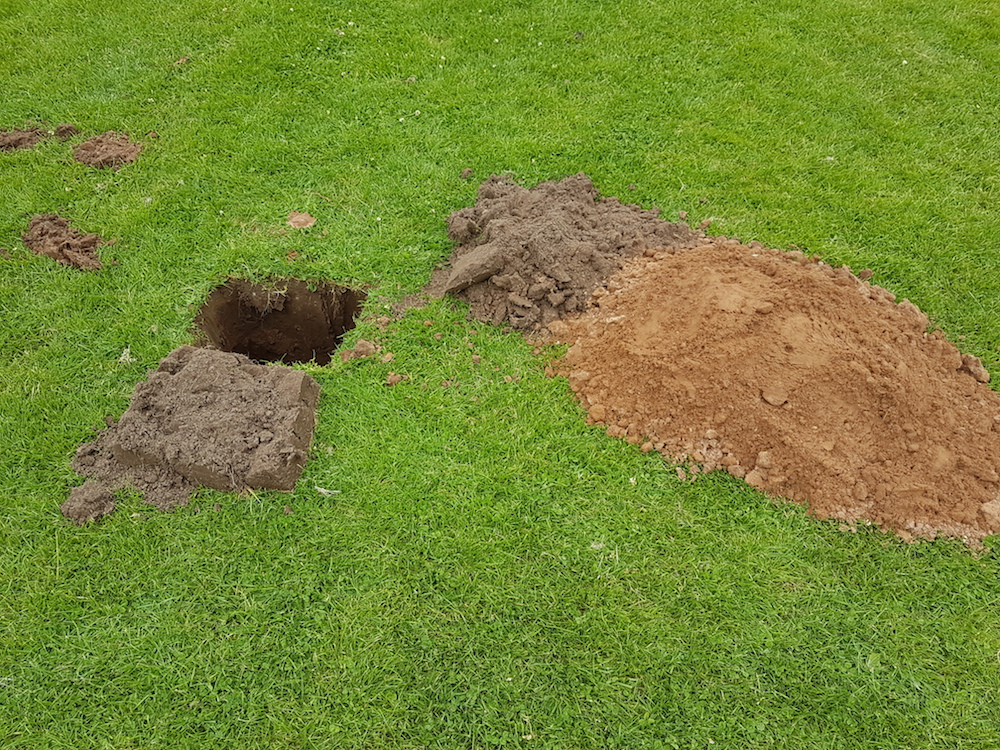Percolation Tests and Soakaway Tests determine whether the ground is suitable for soakaways or sceptic tanks. They are widely used to support planning and development applications, using a natural drainage system to store the immediate surface water run-off allowing natural dissipation and attenuation.
Surface water run-off from buildings and paved areas was traditionally disposed of through public sewers or into a watercourse. However, the traditional piped approach to draining sites is being replaced where possible, by a Sustainable Urban Drainage System (SUDS) to mimic natural drainage. The use of natural surface water drainage works limits the impact on the discharge of new upstream building works and avoids the cost of upgrading the sewer system.
Soakaways are not only more sustainable for the environment, but the overall cost of Soakaways is low compared with conventional drainage systems and enables storm water to be dealt with at the source rather than being diverted directly into the sewer system.
Percolation Tests and Soakaways are part of the design process and therefore should be carried out as part of the Ground Investigation prior to any design or construction work taking place. There are a number of different soakaway tests we provide including:
BRE Digest 365 Soakaway Test (Trial Pit)
The BRE Digest 365 Trial Pit Soakaway Test is by far the most common method of soakaway test. A trial pit is excavated with an excavator to represent the soakaway and we use the time taken for the water level to fall from 75% to 25% is used to calculate the Soil Infiltration Rate (m/sec) enabling soakaway design to be undertaken.
Percolation Test (Hand Dug Pit)
Percolations Tests are undertaken for septic tank installations and small scale developments. The tests are undertaken in 300mm square hand dug trial pits and we use the time taken for the water level to fall from 75% to 25% is used to calculate the Percolation Rate (sec/mm).
Falling/Rising Head Permeability Test (Borehole)
Falling Head Permeability Tests are carried out in boreholes where the permeable strata is at a greater depth. The borehole or standpipe is filled with water and the time taken for the water to soakaway is used to calculate the Coefficient of Permeability (m/s).
Alternatively, where the groundwater table is high, Rising Head Permeability Tests are carried out where the water level in the borehole or standpipe is reduced by pumping and the time taken for the water to rise is used to calculate the Coefficient of Permeability (m/s).
Whom to Contact
If you would like a quote for Soakaway, Percolation or Permeability Tests or have any questions, please do not hesitate to contact your Regional Sub Surface Office.



